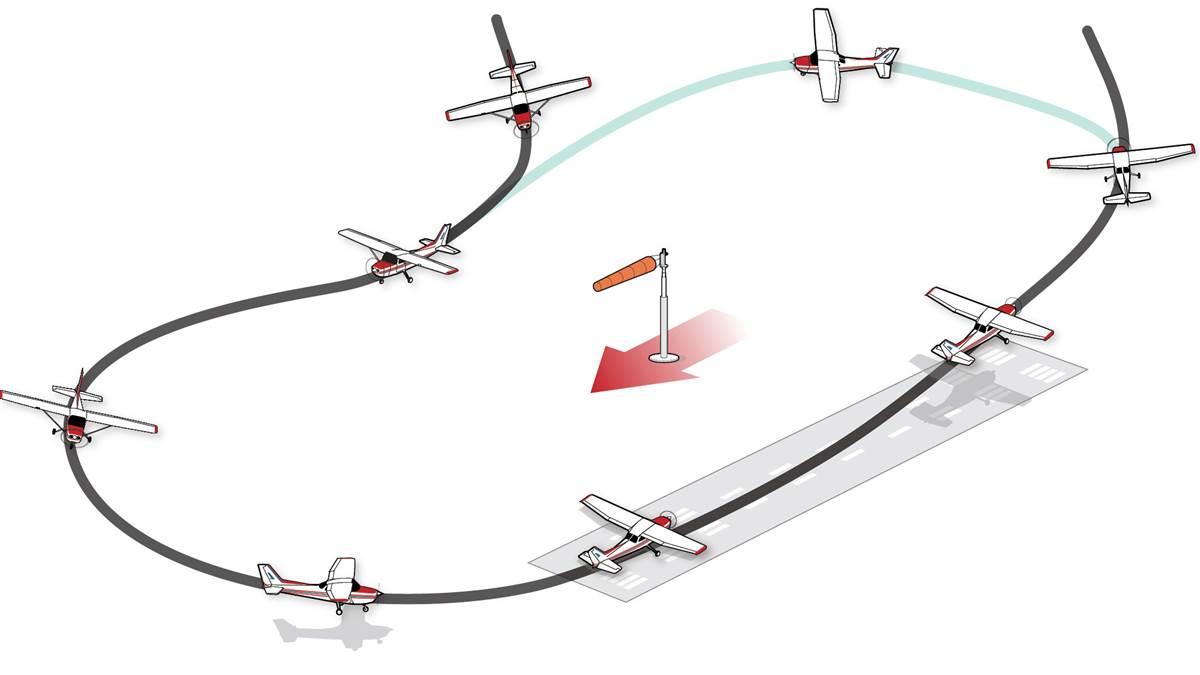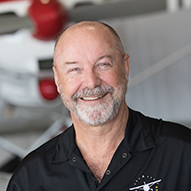Pattern for success
10 tips for flying the traffic pattern

At towered airports, air traffic controllers give pilots instructions to keep aircraft arriving and departing safely and efficiently. At nontowered airports, traffic patterns establish an orderly flow for aircraft taking off and landing. Even at unfamiliar fields, a pilot can anticipate the direction of traffic and enter the pattern safely. You can find traffic pattern information for specific airports on a sectional chart and in the chart supplement (see “Which Way?” p. 48)—and these 10 tips can help you in the airport environment, wherever you fly.
1. Use the checklist
Too often pilots become complacent about the use of the checklist. This is especially true when performing seemingly routine tasks such as taking off or landing. Yet accident reports are replete with accidents and incidents that began with simple items that were ignored even though they were included on the checklist. Is the fuel selector in the proper position? Are the flaps set for a short-field takeoff? Did you adjust the directional gyro and altimeter to accurately reflect your magnetic heading and current atmospheric pressure? Is the carburetor heat selector in the appropriate position? All these minor items can lead to significant safety issues if ignored. Thankfully, the aircraft has a checklist. Unfortunately, it is only effective if the pilot uses it.
2. Avoid distractions
Your passenger may be in the midst of a hilarious story he heard Aziz Ansari tell on HBO last night. Or there may be a major sporting event happening on the ground near the airport. Or perhaps you’re so intrigued by your iPad, or the new electronic display recently installed in your instrument panel, that you fixate on it. Don’t. As you approach and enter the traffic pattern from the ground or in flight, traffic thickens, bird strikes become more likely, and ground-based obstacles can loom uncomfortably close.
Collision avoidance is critical in all phases of flight, but it is particularly important when flying near the traffic pattern. Keep your eyes outside. Glance at instrumentation only as needed. Resist the urge to be a sightseer while acting as pilot in command. Quiet your passengers if necessary, explaining that you need to focus on the task at hand until you’re safely on the ground.
Challenge yourself to configure the aircraft and set the Pitch and throttle to attain that airspeed.
Illustration by Steve Karp
3. Fly a standard traffic pattern entry
The motivation may be to save a gallon of fuel. Or you may need to get on the ground as quickly as possible to scoot off to the restroom. Whatever the reason, avoid flying a nonstandard traffic pattern entry at nontowered airports. The standard traffic pattern entry is at a 45-degree angle to the downwind leg at pattern altitude (see illustration, above). Some will fly a straight-in approach, which puts them on a final approach many miles from the runway. Aircraft in the pattern, or taxiing onto the runway, aren’t expecting an aircraft on a five-mile final. Or you may be tempted to overfly the field at pattern altitude then simply turn, joining the downwind leg at its midpoint. The Airplane Flying Handbook cautions that this technique should not be used if the pattern is busy.
Although these shortcuts may seem expedient, they are also unexpected. Safety is enhanced when you perform as expected. It is degraded when you do something unexpected. So enter the pattern at midfield, on a 45-degree angle to the downwind leg, then continue on. It’s safer for everyone.
4. Coordinate your final turn
One of the common errors pilots tend to make is overshooting the final approach. The base leg extends too near the final leg, and the turn to final leaves the aircraft beyond the centerline by a noticeable margin. This requires the pilot to turn more than 90 degrees to orient the airplane with the runway. Don’t exacerbate the problem by keeping rudder in to facilitate the turn, and then reducing bank because you’re low and slow. This results in crossed controls, or uncoordinated flight. If your aircraft gets slow enough to stall, or if you raise the nose suddenly to arrest your descent, this scenario can result in the classic stall/spin accident we all hope to avoid.
The solution is to practice in the pattern. Remember to turn base to final a little sooner, and always coordinate the turn.
5. Use the whole runway
Like so many common traffic pattern mistakes, the intersection takeoff is intended to save the pilot time, keeping the Hobbs meter reading a tenth or two less than a full runway departure might. Of course, if you’re taking off in a Cessna 152 from the runway of an international airport where you have 6,000 feet ahead of you even at the intersection, the intersection takeoff might be a reasonable choice. On the other hand, if you’re taking off from a 2,500-foot runway, starting your takeoff from an intersection rather than the end of the runway could leave you only 1,200 feet available. Sure, you’ve got enough runway to get airborne in a Cessna 152, but you won’t leave yourself much of a safety margin if anything goes wrong. You might find yourself very low, fairly slow, and with a suddenly rough-running engine as the last few feet of pavement slip behind you.
More runway ahead of you is always better than less runway. Give yourself as much of the full length as is practical. It’s the better choice, even if it does run up the Hobbs by a tenth or two.
6. Keep it tight on downwind
Flying is all about minimizing risk. It’s why we climb at VY (best rate of climb) and why we always plan for an engine failure while hoping one never happens. If you’re tight in to the runway, paralleling it at half a mile wide, your odds of setting down on pavement are excellent. On the other hand, if you’re fond of flying downwind legs that leave you a mile or more from the runway, the likelihood of you finding the runway before you find a tree or building are reduced considerably.
More runway ahead of you is always better. Give yourself as much of the full length as is practical.Keep it tight on downwind. There is no advantage in finding yourself on final, a mile and a half from the runway at 500 feet agl.
7. Maintain your target airspeed
The key to making a good landing is often as simple as maintaining a target airspeed while flying in the pattern. If you find yourself at 85 knots on final for one landing, and 65 knots on the next, your touchdown point may vary by 1,000 feet or more.
Find the appropriate airspeed for final approach in the pilot’s operating handbook. Challenge yourself to configure the aircraft and set the pitch and throttle to attain that airspeed, consistently. That’s not only the key to making good, predictable landings, it’s also the method you’ll use to make the first turn-off on a regular basis—no matter at which airport you’re landing.
8. Trim, trim, trim
In order to fly a stable, predictable airspeed through the pattern, you need to trim the airplane for the specific airspeed you want. Trim the aircraft. Trim with each change in speed, as required. Your workload will decrease, while your pattern work and landings improve. It’s practically magic.
9. Land on the centerline
At some airports, the runway is 150 feet wide, enticing pilots to get sloppy and land to the left or the right of the centerline because they know they’ve got plenty of room to work with. Unfortunately, this sloppiness can become a habit, which becomes a safety issue when landing at a significantly narrower runway where being wide of the centerline means putting one wheel in the grass, and the propeller into a runway light.
While on the base leg, mentally extend the centerline out toward you. See it as a straight line that you intend to straddle, just like the yellow line running down the middle of a taxiway. Adjust your path of flight throughout the final leg to remain on the centerline, right down to touchdown. This habit will not only keep you out of the grass, but it will allow you plenty of time and distance to evaluate the crosswind and make appropriate corrections.
10. Use the radio, but be brief
Whether the field has a tower or not, using the radio to announce your position and intentions is a good idea. If your airplane doesn’t have an electrical system, consider using a handheld radio. An inexpensive adapter will allow you to plug your headset into many handheld models, giving you most of the convenience of a panel-mount radio without the expense.
The key to good radio work is to be specific, but be brief. There may be multiple aircraft using the same frequency at the airport you’re using as well as at other airports in the area. So, get on, get off, and keep your eyes outside the cockpit. A better, safer flight will be the result. 
Jamie Beckett is the AOPA You Can Fly ambassador for Florida.



